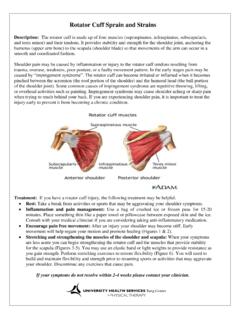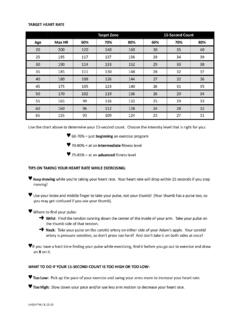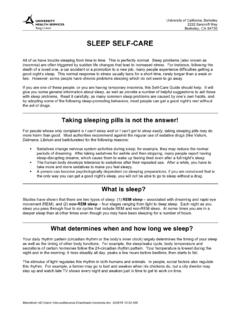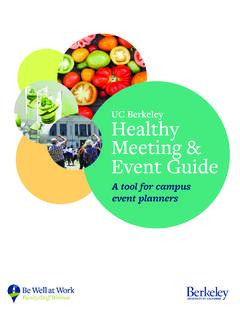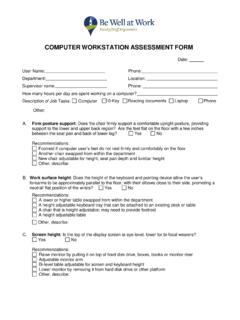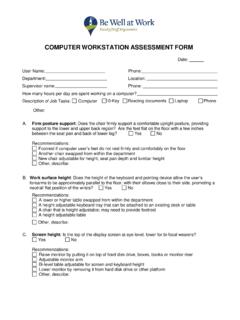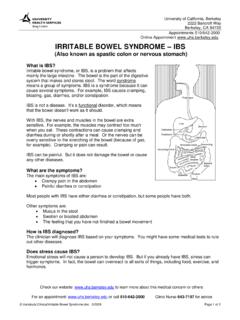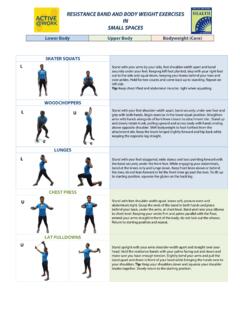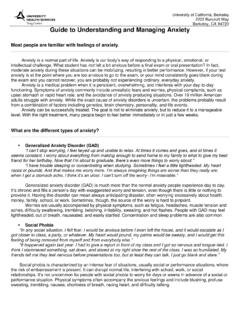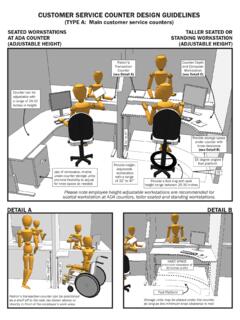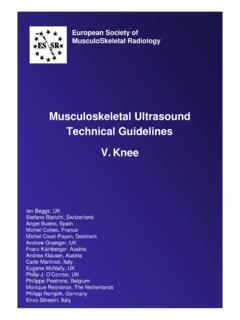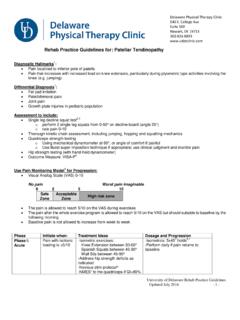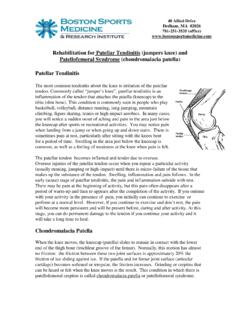Transcription of Patellofemoral pain syndrome - University Health Services
1 Patellofemoral pain syndrome DESCRIPTION: Patellofemoral pain syndrome is defined as pain around the kneecap. There are a few other diagnoses that may be used for pain at or around the kneecap. 1. chondromalacia patellae: actual fraying and damage to the underlying patellar cartilage. 2. patellar tendonitis: inflammation of the patellar tendon. 3. Fat pad irritation: irritation of the fat pad that lies beneath and to the sides of the patellar tendon. POSSIBLE CAUSES: pain from these diagnoses often occurs with increased activity, going up or down stairs. or even with prolonged sitting. Poor biomechanics at the foot, knee and/or hip. Poor muscle strength or imbalance of the leg, hip and gluteal muscles.
2 Excessive muscle tightness in the leg, hip or back. Improper motion of the patella as the quadriceps muscle contracts. Excessive increase in your activity. Poor mechanics with activities such as weight lifting. A change in shoes or bike fit. Incorrect or worn out footwear. TREATMENT: 1) Control pain and swelling Ice your knee 10 minutes at a time a few times a day. Anti-inflammatories can be helpful in reducing pain . You should talk to your medical provider about what kind of medicine may be appropriate for you. Avoid activities that include excessive squatting and kneeling to give your knee a chance to recover. 2) Stretching Try to relieve your pain by making sure you are doing proper stretching- this is important EVEN if you are not exercising frequently (Figures 5, 6).
3 3) Strengthening Strengthen the muscles at your knee and hip (Figures 1-4) to help support your joint and allow for a return to activities. 4) Prevention Gradually increase your activity once your pain has subsided. Do not try and push through the pain . You may also want to think about changing your footwear if it looks like the soles are worn out OR if the inside of the shoe is collapsing and no longer offering you support. If you are a runner, you should consider changing your shoes every 300-500 miles. If your symptoms do not resolve within 2-4 weeks please contact your clinician. Below are some stretches and strengthening exercises to do for the next few weeks. If your pain does not go away, you may need to come back and see a Physical Therapist or an Orthopedic Specialist.
4 Discontinue any exercises that increase your pain . However, it is normal to feel some fatigue in the muscles around your knee and hip. Talk to your provider if you have any questions. STRENGTHENING EXERCISES: Outer Hip Raises: (fig. 2). Straight Leg Raises ( ). Keep toes pointed slightly downward and keep Tighten muscle above knee, lift leg up, about 1 leg back. Make sure you feel your glutes foot, slowly lower, keeping muscle tight. Do 3 working. Do 3 sets of 15 repetitions. sets of 15 repetitions. Bridging (fig. 4). Inner Hip Raises (fig. 3). Put both feet on a chair or bench. Tighten Lift affected leg up and down, keeping knee abdominals. Lift up bysqueezing your glutes. muscle tight.
5 Do 3 sets of 15 repetitions. Don't let your back arch. Do 3 set of 15. repetitions. STRETCHES: Hamstring Stretch (fig. 5) Quad and Hip Flexor Stretch (Fig. 6). Using a towel, belt or holding onto your shoes, Hold for 2 minutes. Pull until you feel a stretch Put leg on wall until you feel a stretch. Hold for In the front of you thigh and hip. Hold for 2 minutes. Do not continue if you feel any one minute. numbness or tingling in leg. Rev 9/11.
